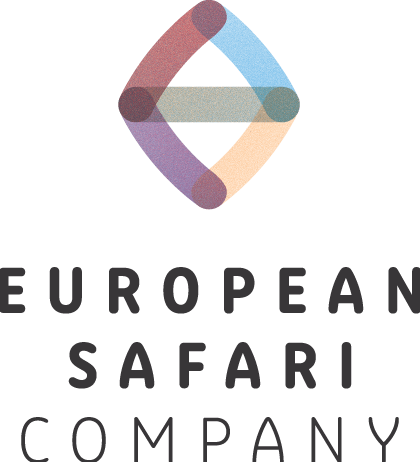Greater Côa Valley
Shaping the Greater Côa Valley
Rewilding Europe is working with its local partners to shape the Côa Valley through the development of a 120,000-hectare wildlife corridor – the Greater Côa Valley – that connects the Malcata mountain range in the south with the larger Douro Valley in the north. Innovative land-use models will be applied in a region with one of the highest land abandonment levels in Europe, transforming threats of landscape degradation, rural depopulation and economic downturn into new opportunities based on rewilding principles. Furthermore, the Portuguese subpopulation of Iberian wolf south of the Douro river is currently fragmented and highly isolated from the rest of the Iberian population due to geographic, ecological and social barriers. The LIFE WolFlux project aims to promote the ecological and socio-economic conditions needed to support the viability of this wolf subpopulation.
There are also valuable Thermo shrublands and pre-steppe, sub-steppe areas with grasses and annuals of Thero-Brachypodietea, thermophilic ash trees forest (Fraxinus angustifolia), Galician-Portuguese oak woods with Quercus robur and Quercus pyrenaica, gallery forests of Salix alba and Populus alba, alluvial forests (Alnus glutinosa and Fraxinus excelsior) (Alno-padion, Alnion incanae, Salicion albae), gallery forests of Salix alba and Populus alba and siliceous rocky with pioneer vegetation of the Sedo-Scleranthion or of the Sedo albi-Veronicion dillenii.
Valleys and basins (Arribes of Duero, Arribes of Agueda, International Tajo River, Vale do Coa or Ucles and Huebra rivers still held without hydraulic dams) that connect the mountain with piedmont areas.
In 2016 a five-year partnership agreement was signed with the board of Portuguese NGO Associação Transumância e Natureza (ATN) regarding the development of the Côa Valley as a major rewilding initiative.
In 2019 the LIFE WolFlux project "Decreasing socio-ecological barriers to connectivity for wolves south of the Douro River" started.
A feasibility study on the reintroduction of roe deer, red deer and Iberian ibex in the Côa Valley has been prepared by the University of Aveiro.
87 Garrano horses, 35 Sayaguesa cows and 27 Maronesa cows currently graze in the two sections of the Faia Brava Reserve. The existing herd of 45 Garrano horses living in the Faia Brava Reserve has been added to the European Wildlife Bank.
In the newer section of the Faia Brava Reserve (200 ha on the opposite bank of the Côa River) a new natural grazing project has started, with small herds of semi-wild Garrano horses and Maronesa cows.
In 2017 ATN started the so-called Zebro Project, selecting and cross-breeding Sorraia horses to maximise wild characteristics. These will eventually be released as a herd at a site close to Faia Brava.
Wildlife Portugal, a wildlife watching business, became the fourth enterprise to receive a REC loan. It is part of a "cluster" of complimentary enterprises, which also includes Star Camp, Casa da Cisterna and Miles Away. Integrated collectively in various tourism programmes offered by the European Safari Company, local hotels and operators, they have also been presented at various tourism fairs.




Rewilding Europe is working with its local partners to shape the Côa Valley through the development of a 120,000-hectare wildlife corridor – the Greater Côa Valley – that connects the Malcata mountain range in the south with the larger Douro Valley in the north. Innovative land-use models will be applied in a region with one of the highest land abandonment levels in Europe, transforming threats of landscape degradation, rural depopulation and economic downturn into new opportunities based on rewilding principles. Furthermore, the Portuguese subpopulation of Iberian wolf south of the Douro river is currently fragmented and highly isolated from the rest of the Iberian population due to geographic, ecological and social barriers. The LIFE WolFlux project aims to promote the ecological and socio-economic conditions needed to support the viability of this wolf subpopulation.

There are also valuable Thermo shrublands and pre-steppe, sub-steppe areas with grasses and annuals of Thero-Brachypodietea, thermophilic ash trees forest (Fraxinus angustifolia), Galician-Portuguese oak woods with Quercus robur and Quercus pyrenaica, gallery forests of Salix alba and Populus alba, alluvial forests (Alnus glutinosa and Fraxinus excelsior) (Alno-padion, Alnion incanae, Salicion albae), gallery forests of Salix alba and Populus alba and siliceous rocky with pioneer vegetation of the Sedo-Scleranthion or of the Sedo albi-Veronicion dillenii.
Valleys and basins (Arribes of Duero, Arribes of Agueda, International Tajo River, Vale do Coa or Ucles and Huebra rivers still held without hydraulic dams) that connect the mountain with piedmont areas.
In 2016 a five-year partnership agreement was signed with the board of Portuguese NGO Associação Transumância e Natureza (ATN) regarding the development of the Côa Valley as a major rewilding initiative.
In 2019 the LIFE WolFlux project "Decreasing socio-ecological barriers to connectivity for wolves south of the Douro River" started.
A feasibility study on the reintroduction of roe deer, red deer and Iberian ibex in the Côa Valley has been prepared by the University of Aveiro.
87 Garrano horses, 35 Sayaguesa cows and 27 Maronesa cows currently graze in the two sections of the Faia Brava Reserve. The existing herd of 45 Garrano horses living in the Faia Brava Reserve has been added to the European Wildlife Bank.
In the newer section of the Faia Brava Reserve (200 ha on the opposite bank of the Côa River) a new natural grazing project has started, with small herds of semi-wild Garrano horses and Maronesa cows.
In 2017 ATN started the so-called Zebro Project, selecting and cross-breeding Sorraia horses to maximise wild characteristics. These will eventually be released as a herd at a site close to Faia Brava.
Wildlife Portugal, a wildlife watching business, became the fourth enterprise to receive a REC loan. It is part of a "cluster" of complimentary enterprises, which also includes Star Camp, Casa da Cisterna and Miles Away. Integrated collectively in various tourism programmes offered by the European Safari Company, local hotels and operators, they have also been presented at various tourism fairs.



